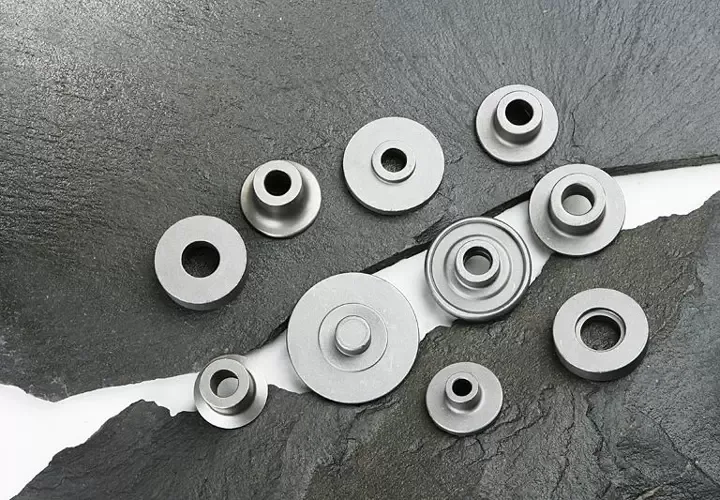- This topic is empty.
-
AuthorPosts
-
2025-05-15 at 11:07 pm #6514
The automotive industry, a key player in global manufacturing, constantly demands innovations in materials and manufacturing processes to improve vehicle performance, safety, and efficiency. Among the manufacturing techniques that have revolutionized automotive component production, cold forging components stand out due to their ability to produce parts with superior strength, precision, and durability. This article Full-Linking delves into the significance of cold forging components in the automotive sector, exploring their advantages in vehicle design and manufacturing.
What are Cold Forging Components?

Cold forging components refer to metal parts that are shaped and formed under high pressure at or near room temperature. Unlike traditional hot forging, where the metal is heated to high temperatures before being shaped, cold forging is conducted without heating the material, except for slight pre-warming. This process involves the deformation of metal to form parts with enhanced mechanical properties, such as increased strength, hardness, and fatigue resistance. It is a precise and efficient technique, particularly beneficial for producing high-volume, intricate parts used in various automotive systems.
Key Advantages of Cold Forging in Automotive Manufacturing
The benefits of cold forging components in the automotive industry are numerous, making it a preferred choice for producing critical automotive parts. The following advantages highlight why this technique is widely adopted in the sector:
1. Superior Mechanical Properties
One of the primary benefits of cold forging is the significant enhancement of the mechanical properties of the metal. During the cold forging process, the metal's grain structure is refined, resulting in improved strength, hardness, and wear resistance. These properties are particularly crucial in automotive applications, where components must endure extreme forces and repetitive stresses, such as those found in engine systems, transmission parts, and suspension components. The cold forging components are known for their ability to handle higher loads, resist deformation, and perform well under fatigue. This makes cold-forged components ideal for applications that require high durability, such as gears, camshafts, and crankshafts, which are essential to automotive engines and drivetrain systems.
2. Dimensional Precision and Consistency
In the automotive industry, precise dimensions are critical for the proper functioning of vehicle components. Cold forging components provide exceptional dimensional accuracy, allowing manufacturers to create parts that meet strict tolerances without requiring additional machining. This high level of precision ensures that the parts fit together perfectly during assembly, reducing the chances of errors and increasing the overall quality of the vehicle. The consistency in shape and size achieved through cold forging also helps streamline the manufacturing process. With fewer post-processing steps needed, manufacturers can increase efficiency and reduce production costs, contributing to more affordable automotive components.
3. Cost-Efficiency and Reduced Material Waste
Cold forging is a highly efficient process that results in minimal material waste. Because the material is shaped rather than removed, there is little to no scrap generated during production. This is particularly advantageous for high-volume production runs, where material savings can significantly reduce overall manufacturing costs. Additionally, the strength of cold forging components allows manufacturers to use lighter materials, which can reduce the overall weight of the vehicle. Lightweight components contribute to improved fuel efficiency and reduced emissions, both of which are increasingly important in the automotive industry.
4. Improved Surface Finish
Unlike other manufacturing methods, such as casting, cold forging produces components with smoother surface finishes. This is due to the metal being deformed under pressure, which creates a more uniform and polished surface. A better surface finish enhances the performance of automotive parts, especially those subject to friction, such as gears and bearings. Cold-forged components typically require less finishing work, which reduces both labor costs and production time. In addition, the smoother surface reduces the risk of wear and tear during operation, leading to longer-lasting components that are more resistant to corrosion, rust, and other forms of degradation.
Cold forging is an essential process in the automotive industry, offering numerous advantages in the production of critical components. The ability to produce cold forging components with superior mechanical properties, precision, and durability makes this technique invaluable in automotive manufacturing. From engine parts to suspension components, cold forging enables the creation of high-performance parts that are integral to the safety, reliability, and efficiency of modern vehicles. As the automotive industry continues to evolve, the demand for cold forging components will grow, as manufacturers seek innovative ways to improve vehicle performance while reducing weight and enhancing fuel efficiency. The continued use and development of cold forging technology will play a crucial role in shaping the future of automotive manufacturing.
https://www.fulllinking.com/news/Enhancing-Automotive-Performance-with-Cold-Forging-Components.html
https://www.fulllinking.com/cold-forging-service.html
http://www.fulllinking.com
Full-Linking -
AuthorPosts
- You must be logged in to reply to this topic.